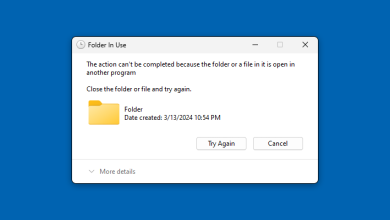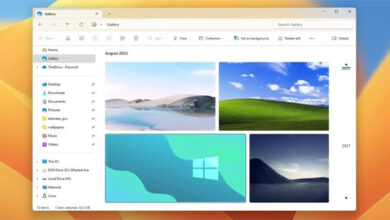How to View Saved Wi-Fi Passwords in Windows 11 & 10
When you connect your Windows PC to a Wi-Fi network, it saves its password. So, the next time you connect to the same network, it won’t prompt for the password again. Over time, a lot of Wi-Fi networks get saved into your PC just like your Android phone. So, there may be a time when you need to find or view those saved Wi-Fi passwords on a Windows 11 or 10 PC.
There may be several reasons for that. For example, you might want to connect to the same Wi-Fi network on another laptop but can’t remember the passwords. So, if you could extract saved Wi-Fi passwords from your Windows 11 or Windows 10 laptop/PC, you can easily use them to connect to the same networks on another PC or phone.
SEE ALSO: How to View the Saved Wi-fi Passwords in Android Phone using Terminal Emulator?
View Saved Wi-Fi Passwords in Windows 11 or Windows 10
In Windows 11 or Windows 10, you can find saved Wi-Fi passwords from the Network Connections. However, it only shows the password of the currently connected network. So, if you wish to find all the saved Wi-Fi passwords in Windows 11 or 10, you can use the Command Prompt or Windows Terminal.
So, in this tutorial, we will show you both graphical as well as terminal methods to view saved Wi-Fi passwords in Windows 10 and Windows 11. Besides that, we will also show you a third-party tool method to do it in a more user-friendly way. Let’s begin with the Windows native graphical (GUI) method first.
A) Check the Saved Wi-Fi Passwords Using the GUI Method
As mentioned earlier, the GUI method is limited to the currently connected network only. So, you can’t view the passwords of all saved Wi-Fi networks. But it will give you a basic idea about it. So, check these steps.
Step 1: Open Network Connections
First of all, press “Windows + R” on your keyboard to launch the RUN utility. After that, type ncpa.cpl and press Enter to open Network Connections.
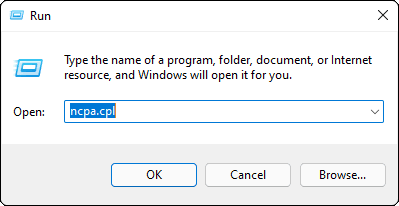
ncpa.cpl and press EnterIn the Network Connections window, you will see all your available network adapters in your Windows 11 or Windows 10 PC or laptop. Here, we will select the wireless adapter to view the saved Wi-Fi passwords in Windows 11 or Windows 10.
Step 2: Go to Wireless Adapter’s Settings
Now, right-click on the wireless adapter and select Status from the context menu.
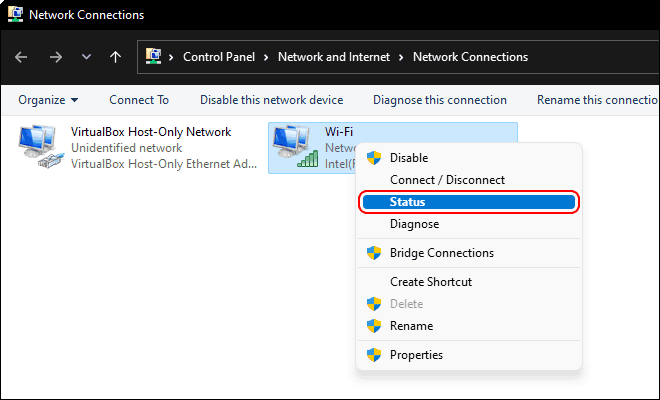
In the Status window, you can see the connection status, SSID, speed, etc. details. Now, click on the Wireless Properties button to check the connected network’s details.
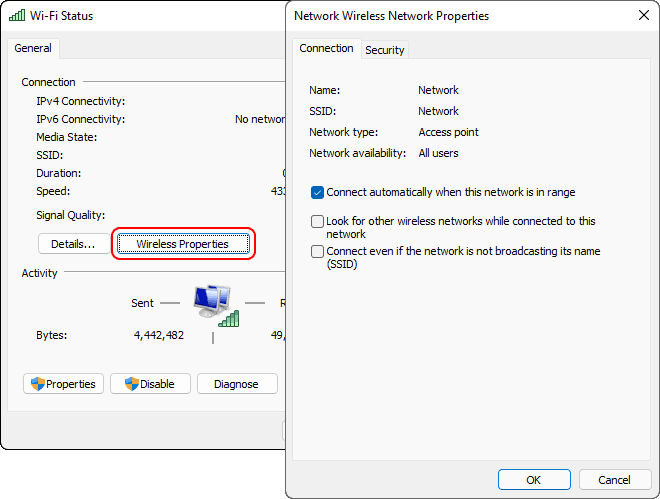
Step 3: View Saved WiFi Password in Windows 11 or Windows 10
In the selected Wi-Fi network’s properties window, go to the Security tab. Here, you can see the Security type, Encryption type, and Network security key. The Network security key is the Wi-Fi password we are looking for. Now, click on the Show characters checkbox to view the saved Wi-Fi password on your Windows 11 or Windows 10 PC.

SEE ALSO: How to Restore the Classic File Explorer Menu Ribbon in Windows 11?
B) View the Saved Wi-Fi passwords using CMD Commands
The native GUI method allows you to view only the currently connected WiFi network’s password. However, the Command Prompt method allows you to view all saved Wi-Fi passwords on your Windows 11 or Windows 10 PC.
In this tutorial, we are using Windows Terminal instead of Command Prompt. But you can always use the Command Prompt for the same. Let’s check the steps.
Step 1: Open CMD or Windows Terminal as Administrator
First, launch the Command prompt or Windows Terminal as administrator. To launch the Windows Terminal as administrator, right-click on the Start and select the “Windows Terminal (Admin)” option.
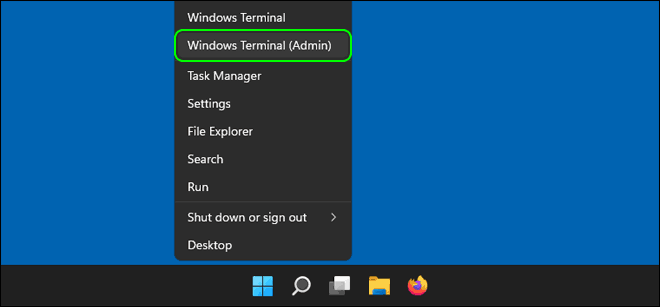
SEE ALSO: How to Set up Windows Terminal to Open Command Prompt by Default?
Step 2: View All Saved Network Profiles
Now, type the following command in the Terminal or Command prompt and press Enter.
netsh wlan show profiles
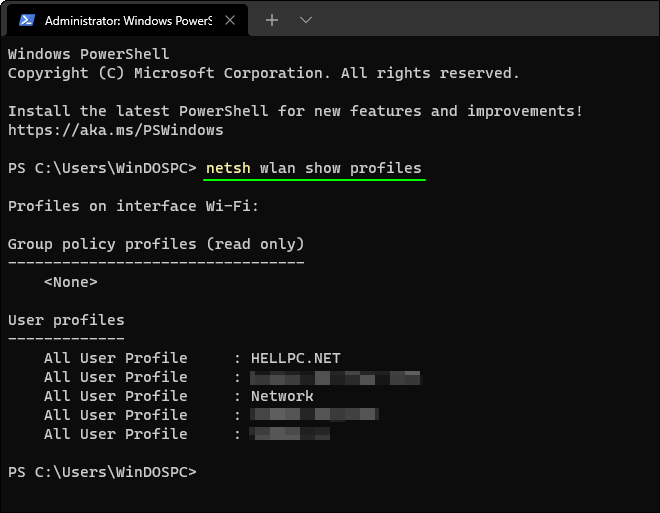
Under User profiles, you can see the list of all WiFi networks (SSIDs), you have ever connected on your Windows 11 or 10 PC or laptop.
Step 3: View the Saved Wi-Fi passwords using CMD Commands in Windows 11 or 10
Finally, type the following command to view the passwords of the saved Wi-Fi networks in Windows 11 or 10.
netsh wlan show profiles name="<network name or SSID>" key=clear
Make sure to replace the <network name or SSID> with the actual name of the WiFi network. After that, you will see the details of the selected network.
Scroll down a bit and find the Key Content under the Security settings. The value shown next to the Key Content is your saved WiFi password for the selected SSID.
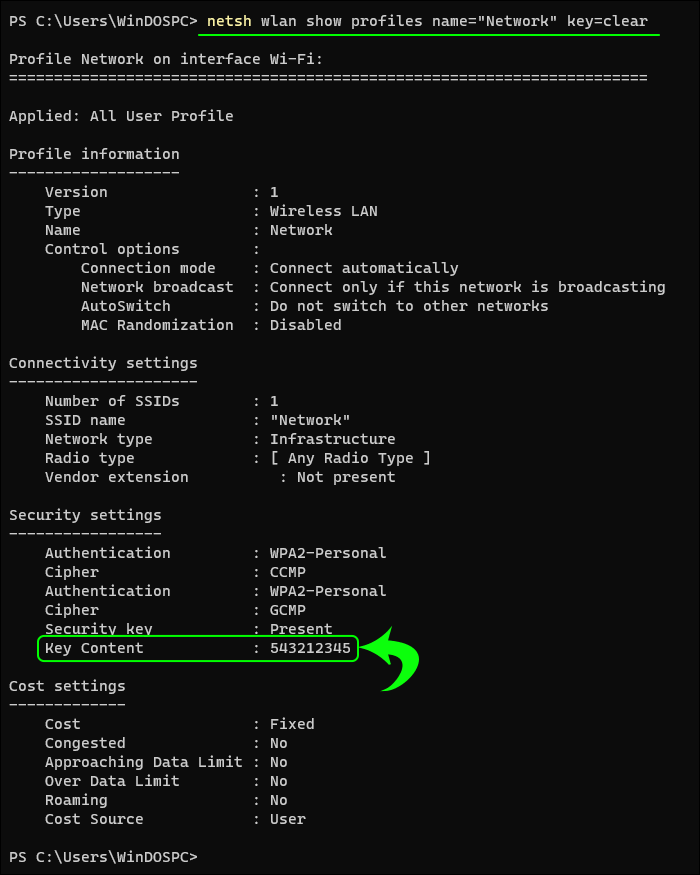
Similarly, you can find the Wi-Fi passwords of all the saved networks by replacing <network name or SSID> in the above command.
SEE ALSO: A to Z List of Windows CMD Commands (PDF Download Available).
C) Use Wi-Fi Password Revealer (third-party) Utility to View Saved Passwords
Both of the methods explained above are native and don’t require any third-party utility. However, they are a bit trickier for newbies. So, if you prefer to use a user-friendly method to view the saved Wi-Fi passwords in Windows 11 or Windows 10, you can use WiFi Password Revealer.
the WiFi Password Revealer is a free utility from the Magical Jelly Bean. Remember, you can only use this utility to view the saved Wifi passwords but can’t use it to view passwords of unknown networks.
Step 1: Download and Install WiFi Password Revealer Utility
First of all, download the WiFi Password Revealer utility on your PC. It’s a very small utility (~4 MB), so, you won’t have trouble downloading it.
After downloading, run the setup and follow the on-screen instructions to install the WiFi Password Revealer on your Windows 11 or Windows 10 PC.
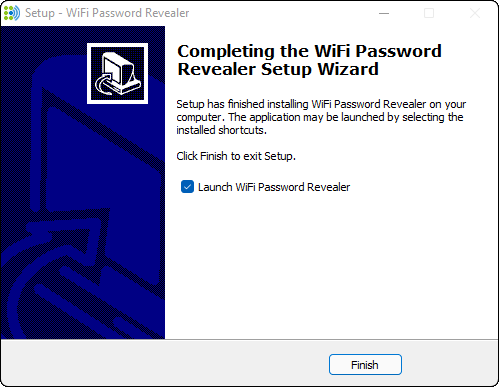
Step 2: View the Saved Wi-Fi Passwords in Windows 11 or 10
After installing the WiFi Password Revealer utility, launch it. Remember, this utility will require administrator rights to find the saved Wi-Fi passwords. So, when you see the UAC prompt, click the Yes button to continue.
Now, you can see all your saved Wi-Fi networks in the WiFi Password Revealer along with passwords and other details.
Besides just the saved Wi-Fi passwords, it will also show you the password of your laptop’s Hotspot.
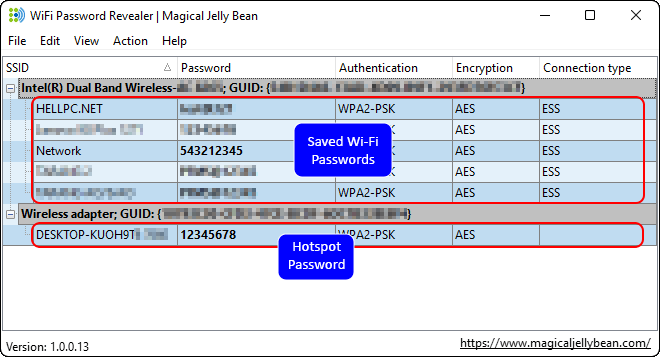
SEE ALSO: How to Reset the Passwords of Users from Multiple Domains using PowerShell?
Find Wi-Fi Passwords Saved on your Windows 11 or Windows 10 PC
So, that was our complete guide on how you can easily view the saved Wi-Fi passwords in Windows 11 or Windows 10. We have explained 3 methods including the one with a third-party utility. While the first two methods are native but are a bit trickier for newbies. And the third method which uses a third-party utility is simple and easy to use.
So, it’s up to you which method you want to use. Hope you liked this tutorial. Feel free to share your queries and suggestions in the comment section below. You may also subscribe to our newsletter to get our latest tutorials directly into your inbox.
